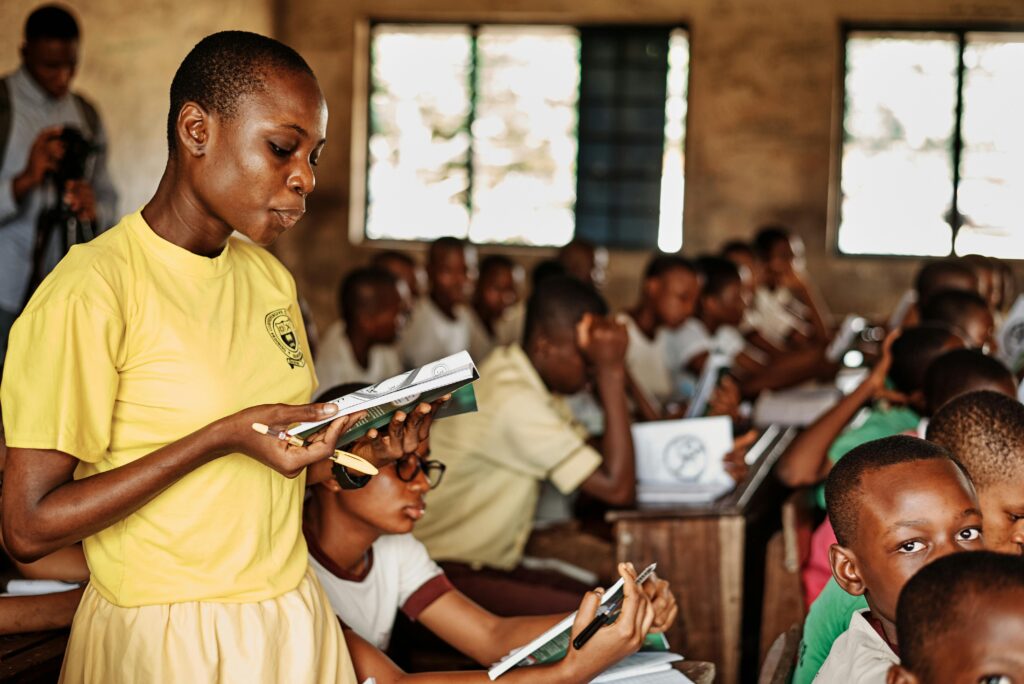Female Empowerment and the Sustainable Development Goals (SDG)
Female Empowerment and the Sustainable Development Goals (SDGs)

The Sustainable Development Goals (SDGs), adopted by all United Nations Member States in 2015, serve as a universal call to action to end poverty, protect the planet, and ensure prosperity for all by 2030. Among these 17 goals, gender equality and women’s empowerment are prominently featured, particularly in SDG 5: Achieve gender equality and empower all women and girls. Here’s a closer look at how female empowerment intersects with the SDGs:
1. Ending Poverty (SDG 1): Empowering women through education, employment, and entrepreneurship is crucial to ending poverty. When women have equal access to resources and opportunities, they can contribute significantly to economic growth and stability. Initiatives aimed at financial inclusion, such as microfinance programs, directly address poverty among women.
2. Quality Education (SDG 4): Ensuring inclusive and equitable quality education for girls is essential for sustainable development. Education empowers women to make informed choices, improves their employment prospects, and leads to better health outcomes. Programs that focus on reducing barriers to education for girls, such as scholarship schemes and community-based education initiatives, are vital.
3. Gender Equality (SDG 5): Achieving gender equality is fundamental to realizing the other SDGs. This goal targets the elimination of all forms of discrimination and violence against women and girls, ensuring equal participation in leadership roles, and recognizing the value of unpaid care and domestic work. Legal reforms and societal changes are necessary to combat gender-based violence and discrimination.
4. Decent Work and Economic Growth (SDG 8): Promoting inclusive and sustainable economic growth requires equal access to decent work for women. Efforts to close the gender pay gap, ensure safe working conditions, and provide opportunities for career advancement are crucial. Supporting female entrepreneurs and facilitating access to credit and markets can drive economic growth and reduce poverty.
5. Reduced Inequalities (SDG 10): Reducing inequality within and among countries includes addressing gender disparities. Policies that promote social, economic, and political inclusion of women are essential. Ensuring that women have equal access to resources, opportunities, and decision-making processes is key to achieving broader social equality.
6. Sustainable Cities and Communities (SDG 11): Creating safe, resilient, and inclusive cities involves addressing the unique needs of women and girls. Urban planning and infrastructure development must consider women’s safety, mobility, and access to services. Community-based programs that involve women in planning and decision-making processes lead to more inclusive and sustainable urban environments.

7. Peace, Justice, and Strong Institutions (SDG 16): Empowering women is crucial for building peaceful and inclusive societies. Women’s participation in governance and peacebuilding efforts leads to more effective and sustainable outcomes. Strengthening legal frameworks to protect women’s rights and ensuring their participation in decision-making processes are vital components of this goal.
8. Partnerships for the Goals (SDG 17): Achieving the SDGs requires strong global partnerships and collaboration. Engaging with international organizations, governments, private sector, and civil society to promote gender equality and empower women is essential. Multi-stakeholder partnerships can leverage resources, knowledge, and expertise to drive progress on gender equality.
Conclusion
Empowering women is not only a standalone goal but a cross-cutting issue that influences the achievement of all the SDGs. By addressing the unique challenges women face and promoting their rights and opportunities, we can create a more equitable, sustainable, and prosperous world for all. The commitment to gender equality must be integrated into all aspects of development planning and implementation to ensure that no one is left behind.
The Sustainable Development Goals (SDGs), adopted by all United Nations Member States in 2015, serve as a universal call to action to end poverty, protect the planet, and ensure prosperity for all by 2030. Among these 17 goals, gender equality and women’s empowerment are prominently featured, particularly in SDG 5: Achieve gender equality and empower all women and girls. Here’s a closer look at how female empowerment intersects with the SDGs:
1. Ending Poverty (SDG 1): Empowering women through education, employment, and entrepreneurship is crucial to ending poverty. When women have equal access to resources and opportunities, they can contribute significantly to economic growth and stability. Initiatives aimed at financial inclusion, such as microfinance programs, directly address poverty among women.
2. Quality Education (SDG 4): Ensuring inclusive and equitable quality education for girls is essential for sustainable development. Education empowers women to make informed choices, improves their employment prospects, and leads to better health outcomes. Programs that focus on reducing barriers to education for girls, such as scholarship schemes and community-based education initiatives, are vital.
3. Gender Equality (SDG 5): Achieving gender equality is fundamental to realizing the other SDGs. This goal targets the elimination of all forms of discrimination and violence against women and girls, ensuring equal participation in leadership roles, and recognizing the value of unpaid care and domestic work. Legal reforms and societal changes are necessary to combat gender-based violence and discrimination.
4. Decent Work and Economic Growth (SDG 8): Promoting inclusive and sustainable economic growth requires equal access to decent work for women. Efforts to close the gender pay gap, ensure safe working conditions, and provide opportunities for career advancement are crucial. Supporting female entrepreneurs and facilitating access to credit and markets can drive economic growth and reduce poverty.
5. Reduced Inequalities (SDG 10): Reducing inequality within and among countries includes addressing gender disparities. Policies that promote social, economic, and political inclusion of women are essential. Ensuring that women have equal access to resources, opportunities, and decision-making processes is key to achieving broader social equality.
6. Sustainable Cities and Communities (SDG 11): Creating safe, resilient, and inclusive cities involves addressing the unique needs of women and girls. Urban planning and infrastructure development must consider women’s safety, mobility, and access to services. Community-based programs that involve women in planning and decision-making processes lead to more inclusive and sustainable urban environments.

7. Peace, Justice, and Strong Institutions (SDG 16): Empowering women is crucial for building peaceful and inclusive societies. Women’s participation in governance and peacebuilding efforts leads to more effective and sustainable outcomes. Strengthening legal frameworks to protect women’s rights and ensuring their participation in decision-making processes are vital components of this goal.
8. Partnerships for the Goals (SDG 17): Achieving the SDGs requires strong global partnerships and collaboration. Engaging with international organizations, governments, private sector, and civil society to promote gender equality and empower women is essential. Multi-stakeholder partnerships can leverage resources, knowledge, and expertise to drive progress on gender equality.
Conclusion
Empowering women is not only a standalone goal but a cross-cutting issue that influences the achievement of all the SDGs. By addressing the unique challenges women face and promoting their rights and opportunities, we can create a more equitable, sustainable, and prosperous world for all. The commitment to gender equality must be integrated into all aspects of development planning and implementation to ensure that no one is left behind.


